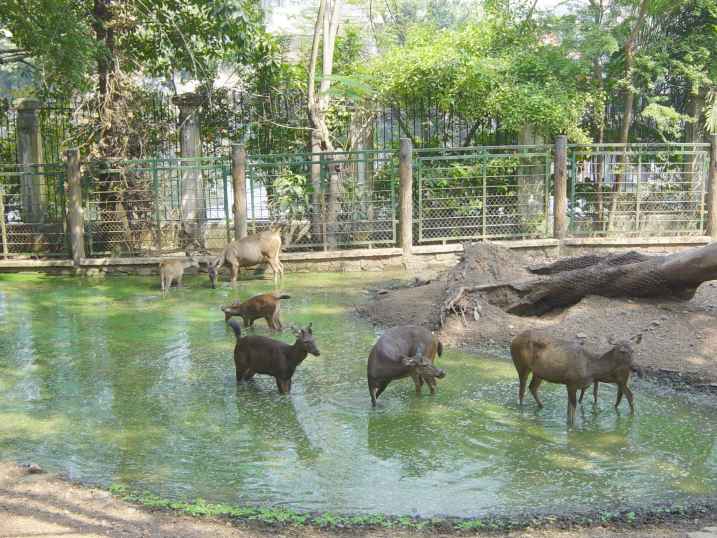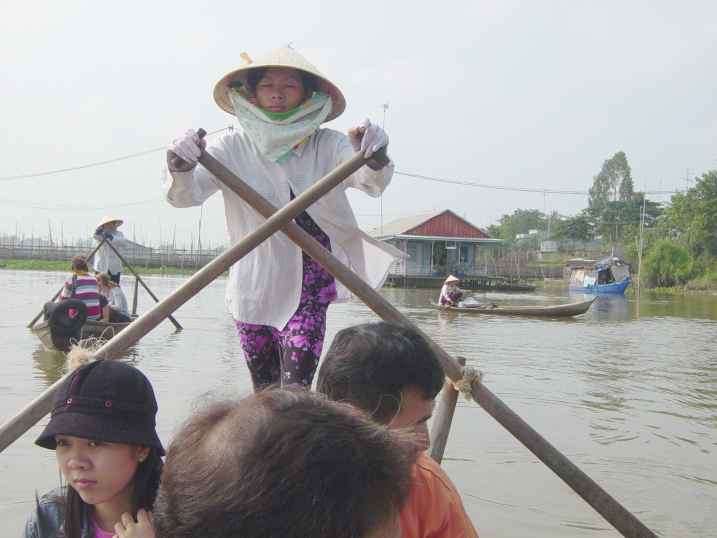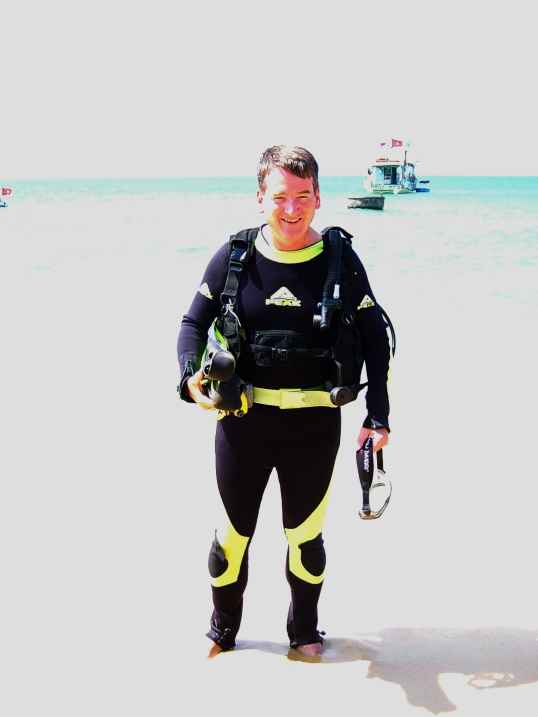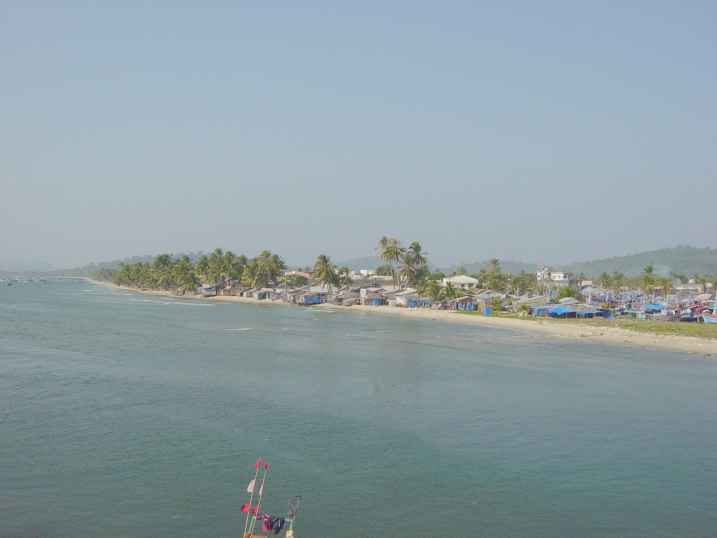I flew seven hours from Tashkent on Uzbekistan Airways. After a brief stop in Hanoi, where most of the passengers got off the plane, we arrived in Ho Chi Minh City, formerly known as Saigon. I quickly retrieved my luggage, went through immigration and customs with no waiting and found a taxi to take me to my hotel. I was immediately struck that even though it was now ten o'clock in the evening, the streets were swarming with motor bikes. I quickly learned that instead of using taxis, the best way to get around town was to get on the back of a motor bike. I also learned that crossing streets was dangerous. The motor bikes never end and they often don't stop for red lights. So waiting for a break in the traffic and running across the road was hopeless. Instead, the expected strategy was to very slowly inch your way into the road, never doing anything abruptly so that the motor bikes had plenty of time to see where you were and to adjust their path accordingly.
The hotel was comfortable and modern, with CNN on the television and, more importantly, western breakfast makings like pancakes, bacon, omelettes and bread for breakfast buffet in addition to the noodles and other oriental dishes that I might have enjoyed for dinner but not for breakfast. The hotel was located in a busy part of the city with many restaurants that was swarming with tourists.
I quickly saw that most of the museums in Ho Chi Minh City focus on the "American" war. Outside the museums are American fighter jets, helicopters and tanks destroyed during the war. Inside are exhibits memorializing the rebels.

One museum showed an American soldier's medals, with a short note: "To the People of a United Vietnam: I was wrong. I am sorry."

The palace that had been the office and home of the South Vietnamese President was renamed "The Reunification Palace". The upstairs is still used for diplomatic receptions while in the basement are the maps, radios and teletype machines used by the South Vietnamese. On the roof is an American helicopter.
Art museums have many images of the war, though they are less political. And a few of the exhibits did not relate to the war at all.

Just outside Ho Chi Minh City is an outdoor museum showing the tunnels used by the Viet Cong and some of the gruesome traps they used on French and American soldiers. The tunnels were too small for me to walk in -- often I had to crawl. They went on for miles, letting the Viet Cong go from village to countryside and pop up in areas the Americans thought were safe. The museum also had exhibits showing how Viet Cong recycled unexploded bombs and used them to disable tanks.

I enjoyed a visit to the zoo. It was in a large park and gave the animals much more space than I had seen in other Asian and former-Communist country zoos. There were also hundreds of school children wearing distinctive uniforms. Nobody seemed to care if children fed bananas to the elephants. Inside the zoo grounds there was also a pogoda and a history museum.


After a few days in Ho Chi Minh City I joined a three-day tour to the Mekong Delta. After driving for a few hours we traveled on a series of boats, large and small, exploring the delta of one of Asia's largest rivers. Lots of people live and work here, this is not a nature preserve. We could see many people making their living on the river.
One of our first stops was at a rice paper "factory". They boiled rice until it could be made into a paste, spread it on a bamboo screen placed over steam then set the paper out to dry.
Then we visited a business collecting rice from farmers' boats then separating the chaff from the edible rice.
There were also busy "floating markets". Farmers brought their coconuts, pineapples, bananas and other crops to market in small boats and sold them to wholesalers in bigger boats.
Many tourists also visited these markets so enterprising women cut the skin off very fresh pineapples and sold us the whole pineapple for twenty cents. And they were delicious!
We stopped for lunch on one island and had time for a bicycle ride. I didn't see any cars on the island, though there were lots of bikes and motor bikes. Some roads were big enough for cars, but there were many bike paths and bridges. Many were paved because in the wet season the going would have been difficult in the mud. I could have happily spent the whole afternoon exploring, but I did not want to get lost and miss my boat.
We visited a crocodile farm that apparently had a good business exporting crocodiles to China. It only takes a few years for the crocodiles to grow large enough to get a good price, though some of their "breeders" are twenty or more years old.
Late one afternoon our boat broke down. So we got off the boat, walked a mile or two on a small lane and jammed onto a small ferry with many Vietnamese passengers to cross to a larger island. There a bus met us to take us to our hotel.
The next morning we got a ride on the Vietnamese version of a Tuktuk to the base of mountain rising above the otherwise very flat delta. On the side of the mountain were dozens of Buddhist temples. We admired the view.
Then we got in very small boats, rowed by women standing in the stern. They took us to floating fish farms. All the floating houses here had constructed cages underneath. They bought small fish, fed them rice hulls and sold the bigger fish. Catfish were very popular.

The next planned stop on my journey was the island of Phu Quoc, in the southwest corner of Vietnam in the Sea of Thailand near the Cambodian border. The agent who sold me the tour of the Mekong Delta assured me that it would be no problem to catch a bus from one of the towns on the river at the end of the tour (instead of returning to Ho Chi Minh City with the rest of the group) and go to Rach Gia. The next morning I would catch the ferry to Phu Quoc. I was a bit nervous, however, as neither the guide nor anyone else on the boat new the bus schedule or exactly where to catch the bus. But they had a plan. The boat docked briefly, I grabbed my suitcase and a young man showed me the path to a road. There he flagged down a motor bike and gave him instructions to deliver me to a restaurant where they assured me that the owner spoke English and would help me find my bus. The non-English speaking motor bike driver propped my suitcase in front of him and we headed down the road. After ten minutes I saw a bus by the side of the road with a sign that said Rach Gia. I jumped off the motor bike and climbed into the bus, paying $1.50 for my seat plus another $1.50 for my suitcase and sure enough, after an hour or two we were on the outskirts of Rach Gia. A crowd of motor bikes eagerly met the bus and a young man delivered me to my hotel. I wandered around town, finding a small tower overlooking the harbor and a school where boys were practicing gymnastics
In the morning I caught the modern fast ferry and I was soon in Phu Quoc, though fifteen or twenty miles from my hotel in Duong Dong. Again a throng of motor bikes met us and I agreed to pay $3 for a ride. We were briefly delayed half way to Duong Dong when he got a flat tire, but there was a tire repair shop not far away and before lunch I was at my hotel.
Phu Quoc is a beautiful island. The white sandy beach seems to stretch endlessly and it lined with palm trees and pines. I rented a bike and spent several hours exploring. I took a "trial" scuba dive, about twenty feet down with my instructor right behind me making sure everything was OK. I'm not good at lying on the beach. After fifteen minutes I need to get up, explore, do something. But here there was not a long list of sites that I needed to visit and I successfully relaxed for a few days -- biking, walking on the beach, swimming and kayaking a bit.


I opted not to retrace my route from Ho Chi Minh City through the Mekong Delta, flying back instead.
Before heading north toward Hanoi, I made a detour into Cambodia.